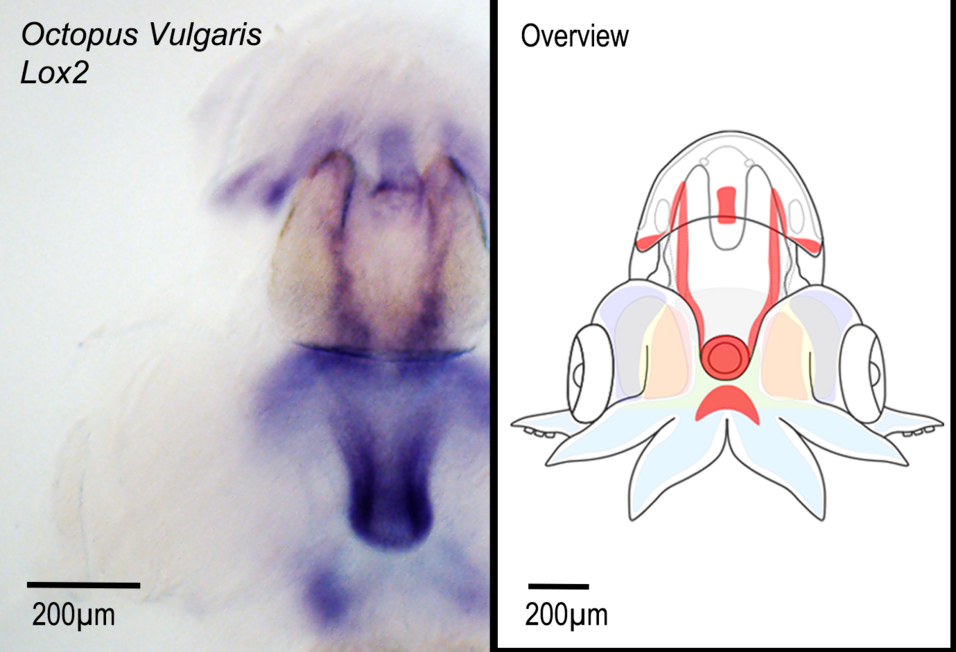Barrera Grijalba CC, Rodríguez Monje SV, Gestal C & Wollesen T. 2023.
Sci Rep 13, 15492 (2023). doi.org/10.1038/s41598-023-42435-0 . Link. Published online 19 September 2023
Abstract
Few other invertebrates captivate our attention as cephalopods do. Octopods, cuttlefish, and squids amaze with their behavior and sophisticated body plans that belong to the most intriguing among mollusks. Little is, however, known about their body plan formation and the role of Hox genes. The latter homeobox genes pattern the anterior–posterior body axis and have only been studied in a single decapod species so far. Here, we study developmental Hox and ParaHox gene expression in Octopus vulgaris. Hox genes are expressed in a near-to-staggered fashion, among others in homologous organs of cephalopods such as the stellate ganglia, the arms, or funnel. As in other mollusks Hox1 is expressed in the nascent octopod shell rudiment. While ParaHox genes are expressed in an evolutionarily conserved fashion, Hox genes are also expressed in some body regions that are considered homologous among mollusks such as the cephalopod arms and funnel with the molluscan foot. We argue that cephalopod Hox genes are recruited to a lesser extent into the formation of non-related organ systems than previously thought and emphasize that despite all morphological innovations molecular data still reveal the ancestral molluscan heritage of cephalopods.

